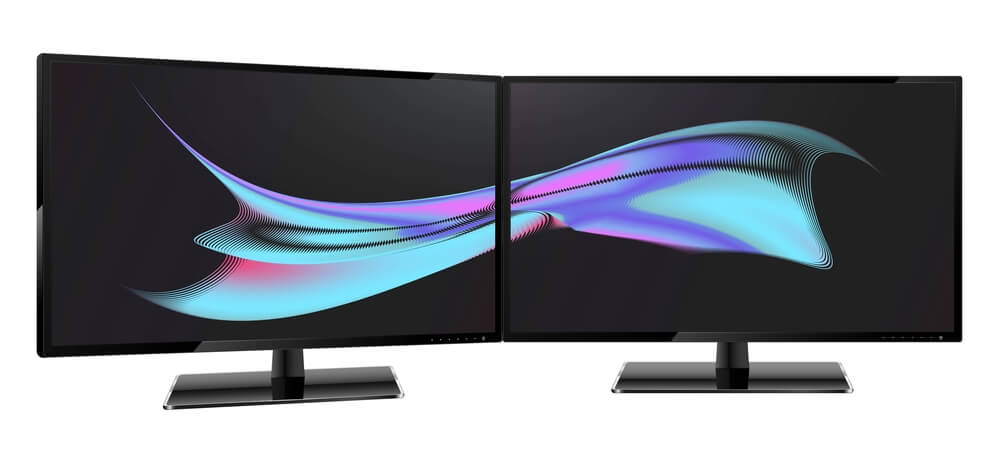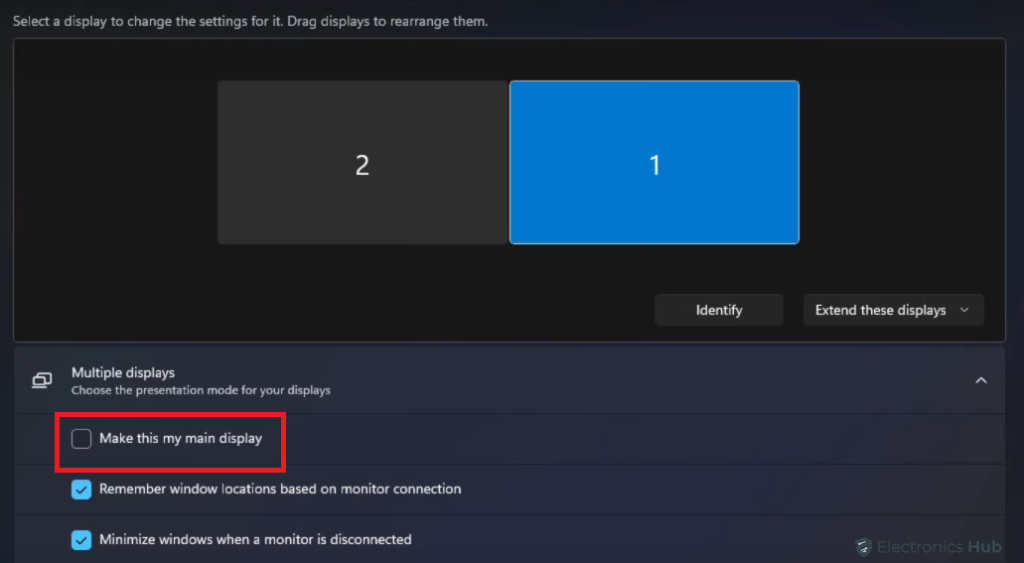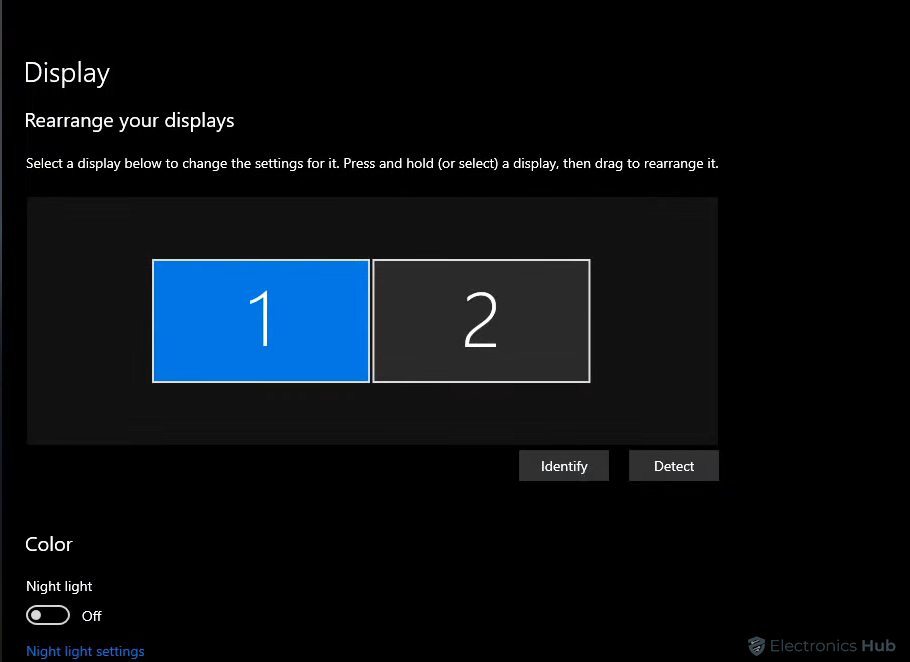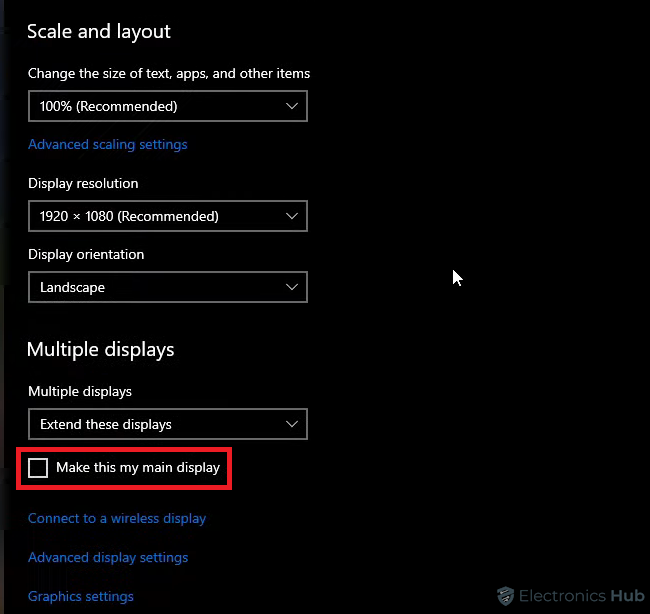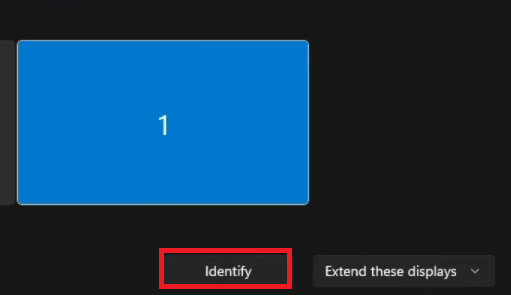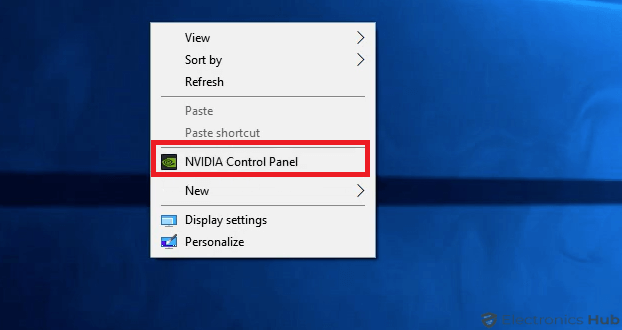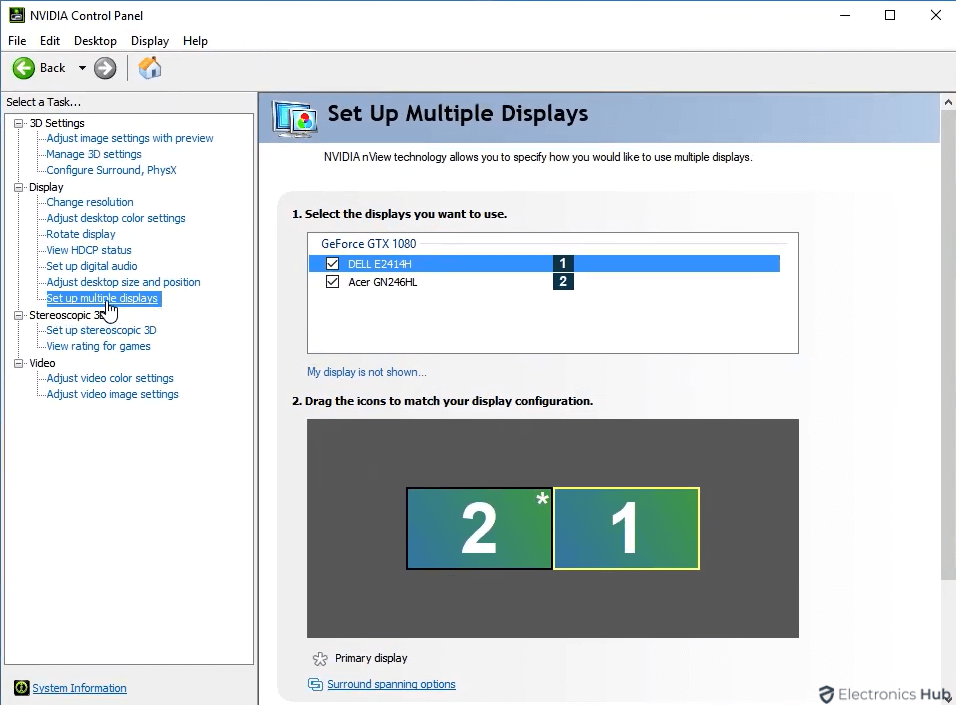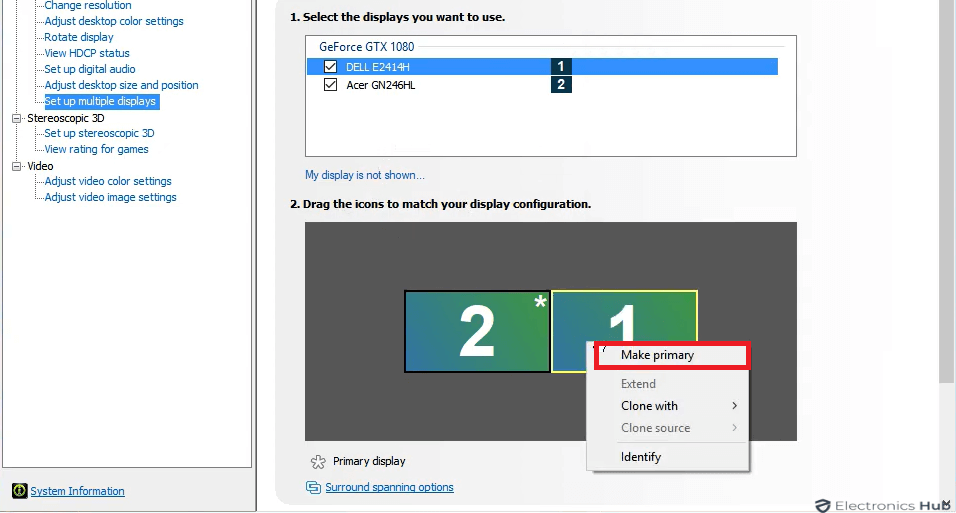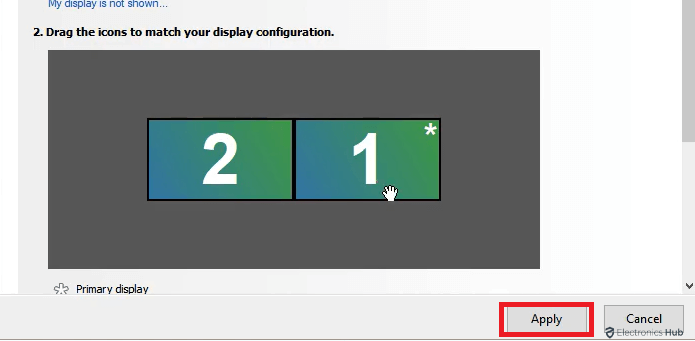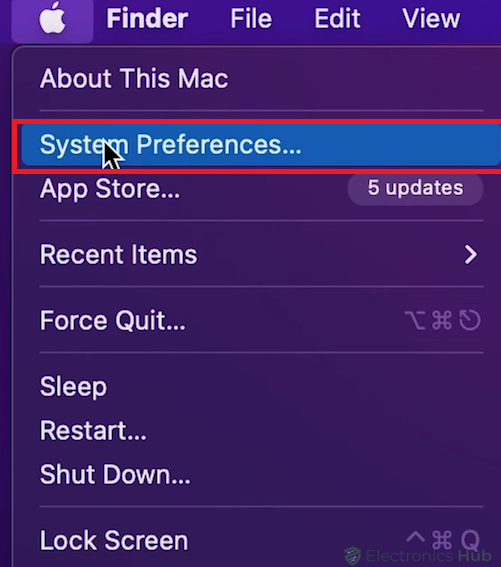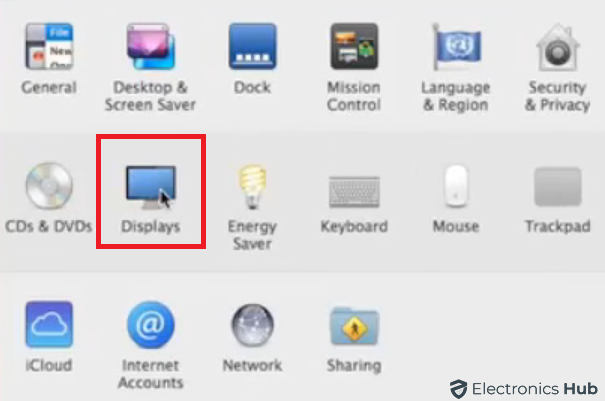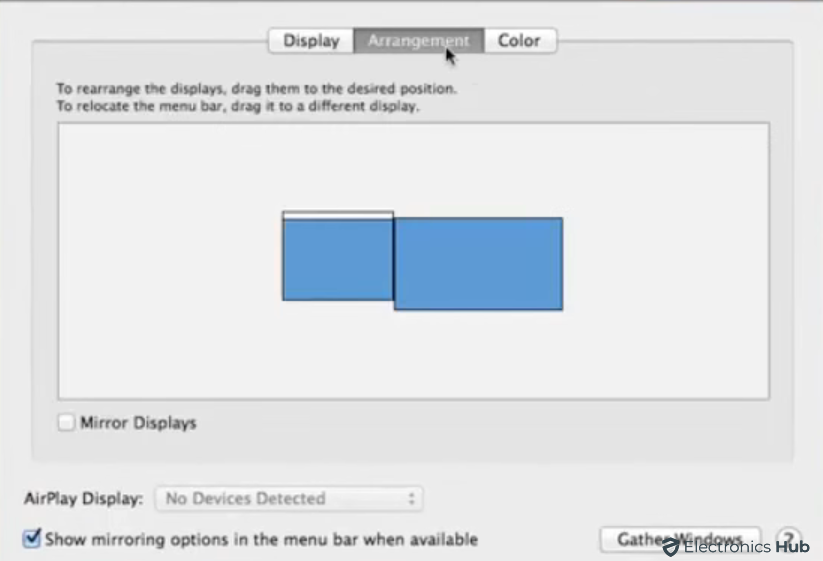Do you have a dual-monitor setup and ever wish your main applications opened on the other screen? Perhaps you game on a high-resolution display but use your laptop for everyday tasks. Whatever your reason, designating a primary monitor is key to a smooth multi-monitor experience. This guide will walk you through the process for both Windows and macOS, so you can be the master of your monitor domain!
Outline
ToggleHow To Change Primary Monitor On Windows?
Changing your primary monitor on Windows is easy and can boost your workflow. Whether you’re on a desktop or laptop, Windows offers several ways to adjust this setting. Let’s explore how to change your primary monitor on a Windows PC, so you can customize your setup effortlessly.
1. By Using Display Settings
On Windows 11
- Right-click on your desktop or search for “Display Settings” in the taskbar.
- In the Display Settings window, you’ll see all your monitors listed with numbers.
- Choose the monitor you want as your primary.
- Scroll down to the “Multiple displays” section.
- Check the box that says “Make this my main display.”
On Windows 10:
- Click the Start menu, then select the gear-shaped “Settings” icon.
- In Settings, click “System,” then go to the “Display” tab.
- Scroll down to “Multiple displays.“
- In the “Select a display to rearrange” drop-down menu, choose your preferred monitor.
- Check the box that says “Make this my main display.”
Note: If you’re unsure which monitor corresponds to which number, you can use the “Identify” option. Simply locate the “Identify” button in the Multiple displays section.
This feature will assist you in identifying which monitor is labeled as number 1 and which one is labeled as number 2, ensuring you make the correct selection.
2. By Using NVIDIA Control Panel
If you have an NVIDIA graphics card on your desktop or PC, you can easily change your primary monitor using the NVIDIA Control Panel. Here’s how:
- Right-click on your desktop to open the NVIDIA Control Panel, or find it by clicking the “Start” button and searching for “NVIDIA Control Panel.“
- In the left menu, choose “Set up multiple displays” from the display section.
- Right-click on the monitor you want as the primary display.
- Select “Make primary” from the menu.
- Click “Apply” to save the changes.
That’s all! Your chosen monitor will now be your primary display, giving you control over your monitor setup.
How To Change Primary Monitor On MacOS?
In MacOS, you can easily set the primary monitor using System Preferences. MacOS offers a user-friendly interface for managing display settings on MacBook, iMac, or Mac Mini. Here’s how to change the primary monitor:
- Click on the Apple logo in the top-left corner of your screen and select “System Preferences.”
- In the System Preferences window, click on the “Displays” icon.
- In the Displays window, go to the “Arrangement” tab. Here, you’ll see a visual representation of your connected displays.
- Look for the display with a thin white menu bar at the top. This is your primary monitor.
- To set a display as the primary monitor, drag the white menu bar to the monitor you want to designate as primary.
- After dragging the menu bar to your preferred monitor, the system will automatically set that display as the primary monitor.
How To Set The Monitor Position?
Once changing the primary monitor is done, setting the position of your monitor is crucial for a seamless workflow. Whether you prefer a specific layout for gaming or work, adjusting the position of your monitors allows you to customize your setup to suit your needs.
On Windows
- Access Display Settings: Right-click on your desktop and choose “Display settings.“
- Identify Available Monitors: You’ll see numbered boxes representing each monitor you have connected.
- Arrange Monitors for Cursor Movement: To move the cursor from left to right across monitors, make sure monitor “1” is on the left and monitor “2” is on the right.
- Adjust Monitor Position: Click, drag, and place the numbered boxes according to your preferred layout. If you’re unsure which monitor is “1” or “2,” click the “Identify” link to display the assigned numbers on each screen.
- Save Changes: After arranging the monitors, click “Keep Changes” to apply the new positions.
On MacOS
- Access “System Preferences”: Click on the Apple logo in the top-left corner of your screen, then select “System Preferences,” followed by “Displays.”
- Arrange Monitors: In the “Arrangement” tab, drag and rearrange the display thumbnails to set up your preferred monitor layout.
Change Primary Monitor – FAQs
Ans: Yes, many operating systems, including Windows and MacOS, support setting different wallpapers for each monitor in a multi-monitor setup.
Ans: To switch primary and secondary monitors in Windows 11, open Windows Settings using Win+I, head to System > Display, and expand Multiple Displays. If the “Make this my main display” checkbox is grayed out, your selected monitor is the primary. If not, select the desired monitor and check the corresponding checkbox.
Ans: Yes, in Display Settings, you can drag and drop displays to rearrange them. This doesn’t alter the monitor positions but aids in moving applications or the cursor when using Extend mode with multi-monitors.
Ans: In Windows 11/10, open Windows Settings (Win+I), go to System > Display, and click “Identify.” This action displays the monitor number on the screen, helping you identify and arrange monitors accordingly.
Conclusion
To wrap up, learning how to change your primary monitor on Windows and MacOS can greatly enhance your productivity. Whether you’re a multitasking pro or a creative genius, customizing your monitor setup is crucial for boosting productivity. This article outlines the steps to configure your primary monitor settings, allowing you to easily adjust your display arrangement to suit your preferences. With this ability, you can create a workspace tailored to your needs, ensuring a seamless computing experience on both Windows and MacOS platforms.

